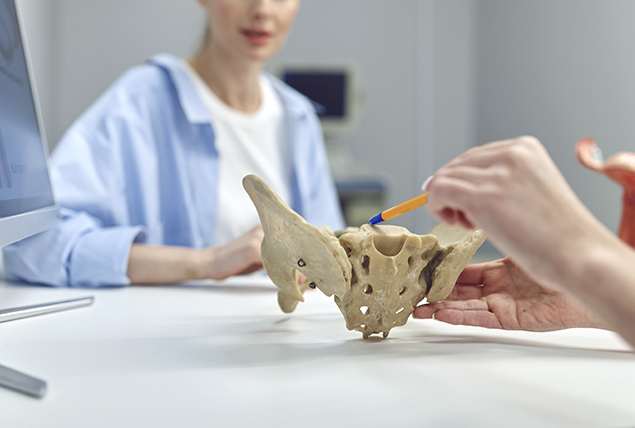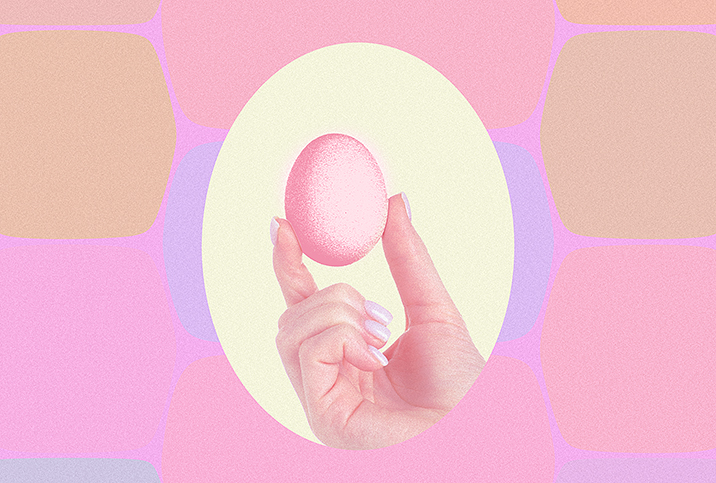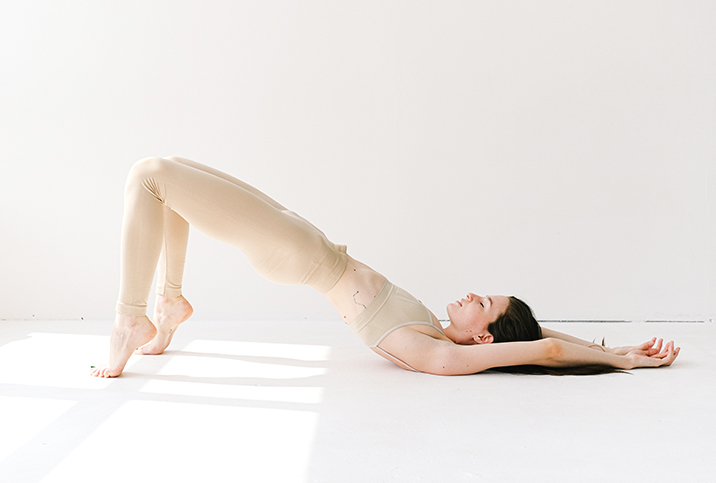Where Is Your Pelvic Floor and Why Does Keeping It Strong Matter?

Social media influencers are great at spreading misinformation. On a recent evening, I found amusement in an influencer's post and its train of comments. They claimed that during your period, you can be as cheerful and mess-free as a tampon commercial if you choose to retain your flow with your muscles and wait to release when sitting on a toilet.
The premise sounds promising, but what are these mystical muscles that are supposedly able to achieve this? The pelvic floor.
What is the pelvic floor?
You've likely heard plenty about the importance of the pelvic floor region and of strengthening your pelvic floor muscles with Kegel exercises. If you aren't sure what the pelvic floor is, registered pharmacist Brad Butt has a visual for you.
"The pelvic floor can be thought of as a 'sling' or a 'hammock' of muscles that stretch from the tailbone to the pubic bone at the front, forming the bottom of the pelvic cavity. Imagine it as a trampoline or a net that provides support for the organs in the lower abdomen," said Butt, the founder and lead pharmacist at Men's Health Downunder in Weston Creek, Australia.
This hammock has three openings: the urethra, the genitals and the anus, said Bijal Toprani, P.T., D.P.T., a physical therapist at Hinge Health in New York City.
The best technique to discover your pelvic floor is to pretend you're peeing and suddenly cut your stream midway to feel the muscles in the front. Mimic the movement you'd do to stop passing gas to feel the muscles in your back contract.
We barely perceive these muscles—except for a second ago when you took them for a test drive. Yet, they play a role in everything happening with the organs they protect.
"When contracted, pelvic muscles tighten and lift the surrounding organs, preventing urination, bowel movements and gas," said Barbara Frank, M.D., an Attn: Grace medical advisor and Harvard-affiliated OB-GYN in Brookline, Massachusetts. "When one is holding a full or semi-full bladder, these are the muscles that keep your pants dry. They also play a massive role in sexual engagement leading to orgasm, working out and of course, giving birth."
Does your pelvic floor affect your period?
Can the pelvic floor actually control menstrual discharge? Not really. Anything on the way to elimination, either discharge, blood or urine, is typically an involuntary process.
Your pelvic floor won't stop your flow.
Contracting your pelvic floor won't make much of a change, either, Frank said. However, if you're one to claim that it happens sort of naturally to you, please learn to work with other tools for dealing with your fluids.
"When you attempt to push anything out of your pelvic floor, you are putting a substantial amount of pressure on it," Toprani said. "This pressure comes from inside your abdomen and causes a strain on your pelvic floor muscles."
Consider how your pelvic floor works in a different way.
"Think about a powerful industrial fan blowing air down on that hammock," Toprani said. "It'll not be able to withstand those forces. The analogy sounds scary, but the bearing down/pushing I am referring to creates that downward pressure."
Forcing these muscles has no immediate consequence when dealing with a pelvic floor with no previous conditions, but the consequences of bad treatment will show with time.
"We have muscle weakness and muscle loss starting in our 30s, just like bone loss," Frank said. "This is the same with the pelvic floor muscles. As you age, you may notice symptoms of a weak pelvic floor, like incontinence or pelvic organ prolapse."
Pelvic pain, lower back pain and sexual dysfunction can be caused by a weak or dysfunctional pelvic floor. That's a handful of many reasons why it's vital for women to exercise their pelvic floor muscles.
How can using the bathroom harm your pelvic floor?
Know this: You're probably hurting your pelvic floor if you're rushing the business of your bladder and bowels.
You increase your risk of issues if you suffer from constipation.
"When excessive pressure is placed on the pelvic floor muscles through pushing or the Valsalva maneuver—the forced exhalation through closed glottis—it can lead to increased tension and intra-abdominal pressure that can strain and potentially damage the pelvic floor muscles and other structures in the region," Butt said. "It's important to note that while the Valsalva maneuver is a natural response that occurs during certain activities, such as heavy lifting or pushing during childbirth, it shouldn't happen intentionally."
Fortunately, we can break bad bathroom habits and make our muscles breathe a little easier:
- Relax and take deep belly breaths in the bathroom to allow the process to happen more gently and naturally. Stop holding your breath for efficiency.
- Your jaw reacts the same as your pelvic floor; if you're tense and your jaw is clenched, so is your pelvis. Rest your elbows or forearms on your knees, without slouching, to really allow relaxation.
- Don't spend too much time sitting down; the position isn't pleasant for those muscles.
- The squatty potty is your BFF. It aligns the muscles in the optimal position and promotes better elimination.
- Healthy eating promotes regular bowel habits, which can help with constipation.
- Only go when your bladder is full, to avoid urinary issues. A healthy stream of urine should last about 12 seconds.
- Pelvic floor exercises like Kegels strengthen these muscles. General exercise is helpful.
The bottom line
Make pelvic floor health a priority. If you have any problems or questions about your pelvic floor muscle support, speak with a doctor.
And as always—when dealing with social media—double-check your sources.


















